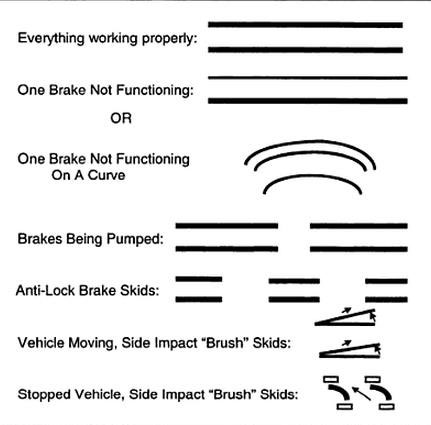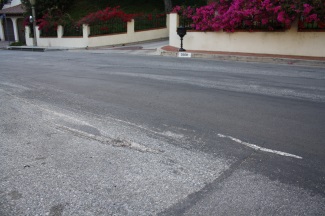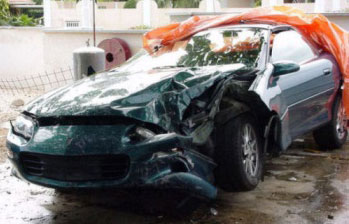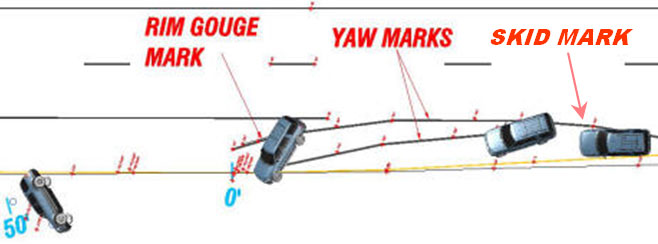Introduction
Road traffic crashes remain a significant global concern, and Malaysia has unfortunately earned a dubious distinction as one of the countries with the highest accident and death rates in the world. Alarming statistics issued by the Malaysian Institute of Road Safety Research (MIROS) between 2000 and 2014 revealed a substantial increase in road traffic crashes, surging from 250,429 cases to a staggering 476,196 cases. Tragically, these accidents resulted in over 6,000 fatalities each year.
A study conducted in February 2014 by the Transport Research Institute at the University of Michigan, USA, ranked Malaysia 17th in the world for road fatalities rate, based on data from the World Health Organization (WHO) in the year 2008, which encompassed 193 other countries.
Defining Road Traffic Crashes
In accordance with the Road Transport Act of 1987, road traffic crashes are defined as accidents or incidents causing damage or injury to any person, property, vehicle, structure, or animal and occurring on any public road, including bridges, tunnels, lay-byes, interchanges, overpasses, and toll plazas.
Road traffic crashes encompass a wide range of vehicles, including motor vehicles, bicycles, tricycles, pedestrians, and others. The World Health Organization (WHO) defines road traffic crashes as “collisions or incidents that may or may not lead to injury, occurring on a public road and involving at least one moving vehicle.”
Road Traffic Crashes and Their Injuries
Road traffic crashes have a significant impact on road safety, and understanding the types of crashes and the injuries they cause is crucial for developing effective preventive measures. In this article, we will explore the different types of road traffic crashes and the injuries suffered by various victims, including pedestrians, drivers, passengers, and two-wheeled vehicle riders, with a focus on the situation in developing countries, particularly Malaysia.
- Pedestrian Injuries:
Pedestrians are vulnerable road users and are at high risk of injury in road traffic crashes. The injuries sustained by pedestrians can be classified into three types:
1. Primary Injury: This occurs during the initial collision when the pedestrian is struck directly by the vehicle. The impact can cause severe trauma to the victim.
2. Secondary Injury: Following the initial collision, the pedestrian may make direct contact with the vehicle or its components. This can lead to additional injuries, compounding the severity of the crash.
3. Tertiary Injury: In some cases, the force of the impact may throw the pedestrian onto the ground, causing secondary injuries when they hit the pavement.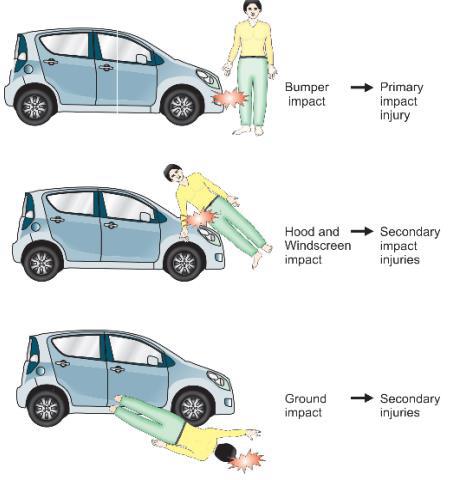
Figure 1: Types of injuries sustained by the pedestrianThe nature and severity of pedestrian injuries depend on factors such as the speed of the vehicle and the specific area of impact. Investigating officers, especially in hit-and-run cases, use injury patterns to match them with the collision’s impact location on the vehicle. For instance, a collision with the front car bumper may result in primary injuries to the pedestrian’s legs, approximately at the bumper’s height.
The speed of the vehicle during the collision is also a significant factor. Low-speed collisions usually result in the pedestrian ending up in front of or to the side of the vehicle. Medium-speed collisions may lead to the pedestrian being tossed over the vehicle’s bonnet or windscreen and then falling to the ground. High-speed collisions can cause severe head trauma when the pedestrian hits the ground surface.
- Driver and Passenger Injuries
Collisions involving vehicles can lead to injuries for both the driver and passengers. These injuries typically occur when occupants of the vehicle collide with hard components within the vehicle or are thrown out from the vehicle during the crash.
The proper use of seat belts can significantly reduce injuries for both drivers and passengers. A seat belt prevents the driver from hitting the steering wheel or being ejected from the vehicle, mitigating the risk of severe trauma. For road traffic investigations, determining whether the occupants were wearing seat belts is crucial in understanding the circumstances of the crash and assigning liability. Linear abrasions caused by the compression of the seat belt can help investigators identify the seating positions of the victims and determine the actual driver during the accident.

Figure 2: Injuries caused by seat belts
Source: epainassist.com
- Two-Wheeled Vehicle Rider Injuries
Developing countries, including Malaysia, heavily rely on two-wheeled vehicles like motorcycles for transportation. Consequently, motorcyclists face a significantly higher risk of traffic collisions, particularly head injuries.
MIROS statistics indicate that motorcyclists constitute about 50% of the total deaths in road traffic crashes in Malaysia.
In contrast to developed countries where motorcycle riding is often leisure-oriented, developing countries use motorcycles as a fundamental mode of transportation, leading to higher accident rates.
The Role of Forensics in Road Traffic Crash Investigations
Forensic science plays a pivotal role in unraveling the truth behind road traffic crashes, shedding light on the sequence of events, causes, and circumstances leading to accidents. By utilizing physical evidence and scientific methodologies, forensic experts provide valuable insights that aid authorities in determining liability, classifying the manner of death, and improving road safety systems.
- Accident reconstruction
Accident reconstruction is a fundamental aspect of road traffic crash investigations, aiming to piece together the puzzle of how the collision occurred. Forensic experts analyse post-crash data and physical evidence to understand the dynamics of the accident.
Physical Evidence Analysis:
Common physical evidence found at crash sites includes tire marks, vehicle damage, debris patterns, and the final position of the vehicles after the collision. Tire marks on the road before, during, and after the crash are essential in understanding the accident’s speed and direction.Interpreting Tire Marks:
Skid marks, resulting from tires sliding or dragging along the road surface after braking, offer valuable information to calculate the vehicle’s speed during the collision. Additionally, skid marks can reveal details about the braking action taken by the driver. Yaw marks, characterized by curved patterns, indicate changes in the vehicle’s direction, such as avoiding a collision or sharp cornering at high speed.Gouge marks, caused by the wheel rims when a tire goes flat or comes off, are significant in determining whether a flat tire caused the accident or if it resulted from the crash.
Figure 3: Skid Marks
Source:http://aug-cdn.comFigure 4: Yaw Mark
Source: http://www.caranddriver.comFigure 5: Gouge Mark
Source:https://underthehollywoodsign.wordpress.comFigure 6: The relative position the car and vehicle that collide it can be determined by looking the front damage
Source: http://www.marshu.comFigure 7: Accident reconstruction process
Source: http://www.evansar.com - Determining the Manner of Death:
A crucial aspect of road traffic crash investigations involves determining the manner of death, whether accidental, suicidal, or homicidal. Authorities rely on information gathered from the accident scene, witness interviews, and forensic medicolegal autopsy examinations.
Autopsy Examination:
Medical officers conduct thorough autopsies to examine the injuries sustained by the victims. Differentiating between injuries caused by the victim themselves, injuries caused by others, or injuries sustained from the accident is essential in understanding the contributing factors to the crash.Specimen Analysis:
During the autopsy, specimens such as blood and urine are collected for drug and alcohol testing, based on the investigation’s requirements. The autopsy findings, including the cause and manner of death, provide crucial information assisting police investigations.
Conclusion
Forensics plays a pivotal role in road traffic crash investigations, providing crucial insights into the sequence of events and causes behind accidents. Through accident reconstruction, physical evidence analysis, and autopsy examinations, forensic experts assist authorities in determining the cause of the accident and classifying the manner of death. By leveraging forensic knowledge, authorities can educate the public on road safety and implement improvements to the road safety system, aiming to prevent future accidents and protect lives on the road. Collaborative efforts between forensic experts, law enforcement, and road safety advocates are essential in making significant strides toward safer roads for all.
References
-
Akta 333, Akta Pengangkutan Jalann Raya 1987 seksyen 2 (Malaysia). Diambil dari Portal Jabatan Pengangkutan Jalan Malaysia: http://www.jpj.gov.my/web/eng/act-333.
-
Dina Murad (2014). Malaysia Has 17th Most Dangerous Roads in the World, According to Michigan University Research. Diambil pada 30 Jun, 2015, dari http://www.thestar.com.my/News/Nation/2014/ 02/22/Nations-with-deadliest-roads-Malaysia-17th/.
-
Jamieson, A. & Moenssens, A. (2009). Reconstruction: Accident. Wiley Encyclopedia of Forensic Science, vol. 5, 2250-2256.
-
Kibayashi, K., Shimada, R. & Nakao K. (2014). Fatal Traffic Accidents and Forensic Medicine. International Association of Traffic and Safety Sciences,38, 71-76.
-
Liu BC et al. (2004). Helmets for Preventing Injury in Motorcycle Riders. Cochrane Database of Systematic Reviews, (2):CD004333.
-
Malaysia Institute of Road Safety Research (2015). Statistics and Accident Characteristics Involving Motorcycles in Malaysia. Diambil pada 30 Jun, 2015, dari http://www.miros.gov.my/c/document_ library/get_file?uuid=9d24d742-5abd-481d-abf5-9128c1384128&groupId=26426
-
Malaysia Institute of Road Safety Research (2015). General Road Accident Data in Malaysia (1997 – 2014). Diambil pada 30 Jun, 2015, dari http://www.miros.gov.my/web/guest/road
-
Mohamad Ghazali, M., Khairil Anuar, M.I. & Mohd Pozi, M.T. (2011). Children, Youth and Road Environment: Road Traffic Accident. Asian Journal Of Environment-Behaviour Studies, Vol 2, No. 6.
-
Ooi, S. S., Wong, S. V., Radin Umar, R. S., Azhar, A. A. & Megat Ahmad, M. M. H. (2005). Cervical Spine Injuries Sustained by Motorcyclists in Road Crashes in Malaysia. International Journal of Crash, 10(2).
-
Peden, M, Oyegbite K, Ozanne-Smith J, et al.. (2008). World Report on Child Injury Prevention. Geneva: World Health Organization. Diambil pada 30 Jun, 2015, dari http://whqlibdoc.who. int/publications/2008/9789241563574_eng.pdf?ua=1.
-
Rudram, D. (2000). Accident Investigation/ Determination of The Cause: Overview. Encyclopedia of Forensic Science, Three-Volume Set, 9-16.
-
Ritter, F. D. (2000) Successful Personal Injury Investigation: Master the Techniques of Finding the Facts that Win Cases for Plaintiff Attorneys. Boleh didapati dari https://books.google.com.my/books /about/Successful_Personal_Injury_Investigation.html?id=2eS5V6PADrUC&redir_esc=y.
-
Singh, N. (2014). Road Traffic Injury [Power Point slides]. Diambil pada 30 Jun, 2015 dari: http://www.slideshare.net/ neharikasingh9678/road-traffic-injury.
-
Worley, H. (2006). Road Traffic Accidents Increase Dramatically Worldwide. Diambil pada 30 Jun, 2015, dari Population Reference Bureau PRB: http://www.prb.org/Articles/2006/RoadTrafficAccidents IncreaseDramaticallyWorldwide.aspx.
| Last Reviewed | : | February 2024 |
| Writer | : | Asrul Fahmi bin Abdul Mutalib |
| Reviewer | : | Nurazira binti Azizan |


